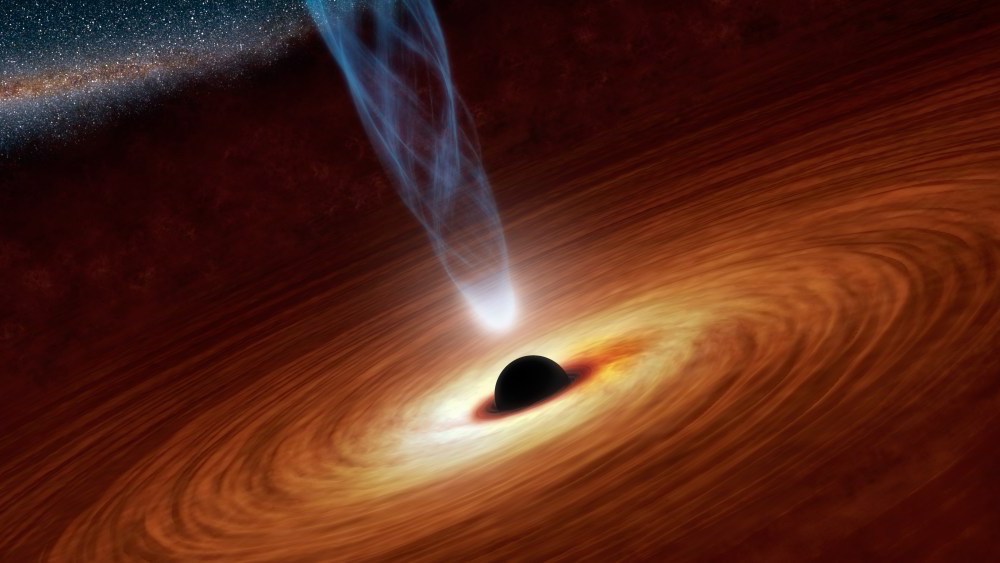Strong Gravity, Spin, and Accretion Across the Black Hole Mass Spectrum
Strong-Field Gravity
Strong-field gravity results in gross deviations from Newtonian physics and qualitatively new behavior for motion near compact objects, including the existence of event horizons and an innermost stable circular orbit (ISCO). As Fig. 1a shows, STROBE-X will probe strong gravitational fields of BHs in a way that is complementary to gravitational wave interferometers such as LIGO and Virgo. Accretion flows and the X-ray photons they emit are “test particles” that probe the stationary spacetimes of compact objects, whereas gravitational waves carry information about the dynamical evolution of these spacetimes. As a result, STROBE-X will enable mapping of the stationary spacetimes of BHs and test the no-hair theorem.
Figure 1a: Range of strong-gravity parameter space probed by astrophysical measurements. The large region probed by STROBE-X is in red on the upper right. Figure 1b: The two known high-frequency QPO modes (above top dashed line) and the expected higher-order QPO modes in the 6.3M accreting stellar-mass black hole (BH) GRO J1655-40, for the two model classes (linear and nonlinear/resonant modes) consistent with observations. The horizontal dashed lines show the minimum detectable mode amplitude. STROBE-X will reveal a large number of additional modes, resolving their physical origin and connection to BH spin. Figure 1c: X-ray reverberation lag-sensitivity curves for a 10 M stellar BH in the 50-150 Hz range and 100 ks exposures, assuming a 2-10 keV flux of 200 mCrab for XMM and NuSTAR and 1000 mCrab for the other missions (which can handle higher count rates without losses). STROBE-X is the optimum mission for X-ray reverberation. The lag sensitivity will be superior to Athena in soft X-rays and near the 6 keV Fe line region, and will also provide unique capability at the 30 keV Compton reflection hump.
Strong-field gravity is parametrized by BH mass and spin, which are encoded in X-ray emission from the inner accretion flow. There are powerful astrophysical motivations for measuring these quantities and the flow geometry. A slowly-rotating accreting BH can only reach the maximal spin allowed in general relativity (GR) by doubling its mass. Understanding the spin distribution of stellar-mass BHs (where such mass growth is unlikely) thus yields essential information on the BH formation process, and hence on the evolution of massive stars and the supernova mechanism, while validating spin measurement techniques will enable Athena to measure large samples of AGN and probe cosmic BH spin evolution.
Black Hole Spin
Dynamical mass measurements of stellar BHs have long been available, but BH spin is accessible only through strong-field GR effects. Timing reveals high-frequency quasi- periodic oscillations (HFQPOs), which occur at roughly the inner disk's dynamical timescale, from several BHs. These are associated with fundamental frequencies in strong-field gravity. Continuum spectra yield constant inner disk radii (most likely at the ISCO) for high accretion rates, a key strong-field relativistic prediction. X-ray spectra of many stellar and supermassive BHs show reflection features with relativistically broadened or redshifted emission lines, most prominently of Fe K. These three complementary approaches (HFQPOs, continuum fitting, and reflection fitting) give independent estimates of BH spin, all accessible with STROBE-X.
In systems in which HFQPOs have already been detected with 1% rms amplitude by RXTE, deeper observations with STROBE-X will allow detections of the 5–10 additional oscillation modes predicted by theory (see Fig. 1b), which can discriminate between competing models and yield masses and spins. For the strongest oscillations, amplitude measurements across the 0.2–30 keV band would strongly constrain the HFQPO emissivity mechanism. HFQPOs can be used to verify and calibrate the continuum fitting and reflection fitting methods. Spectral methods are easier to apply at low count rates, but are susceptible to effective area calibration uncertainties and rely on the assumption that the inner edges of accretion disks are found at the ISCO. It is thus crucial to have a single mission that can apply all three techniques.




